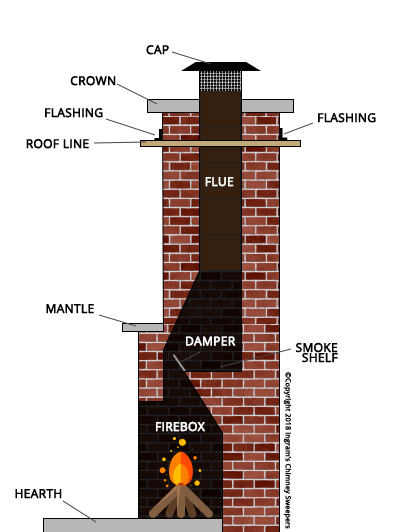Chimney Inspection
An annual Chimney Inspection is crucial to the safety and well being of your home and its occupants. According to the National Fire Protection Association, during the time from 2011-2015, on average 16,810 home structure fires were caused by chimney, fireplace or chimney connectors equaling 31%. The main reason for those fires was failure to clean (71%). Of the 31 %, 17% of the fires started due to creosote. A total of 78% of the fires originated within the chimney or flue.
“I don’t really use my fireplace that much, do I still need a Chimney inspection?”
YES. Even though you are not using the fireplace often, animals could have built a nest since the last time you have used it. In addition to animals, the chimney or flue may have damage that could cause poor airflow for removal of smoke and gasses.
“Do I need a Chimney Inspection even though I don’t burn wood and use gas instead?”
YES. Even though gas burns clean, animals can still build nests in the flue because it seems like it isn’t being used. Debris from animals can render the chimney non-functional.
Main Components of Your Fireplace & Chimney:
Firebox – Seasoned wood is placed in this area of a fireplace and will burn. Depending on what the fireplace is made from, the firebox may be made of brick or metal.
Damper – The damper is used to seal off the fireplace when not in use. The purpose of this device is to keep the warm air inside the home, otherwise it can go up through the chimney.
Smoke shelf/chamber – Usually found only in masonry fireplace, the smoke shelf and smoke chamber are what helps to create the draft for good air flow.
Flue/Flue liner – The flue is a duct or pipe that allows smoke and gas to be pulled up through the chimney and outside. It should be fully open when initially lighting a fire, then slowly closed until it is only open just enough to pull the smoke upwards. The flue can get hot, so protective gloves would be necessary. It must also be adjusted as new wood is added to the fire. Flue liners are used to help protect the chimney from heat transfer as well as flue gases.
Flashing – Flashing is used to prevent water from getting in between the chimney and the structure of the house from the roof.
Crown/Cap – The crown is at the top of a chimney and helps protect it from water. It is sloped, meaning that water will run off it and away from the chimney. Water damage can cause the brick and mortar to decay and break apart from the chimney. The chimney cap is above the crown and helps to protect water, animals and debris from getting inside the chimney. Although not necessary, the chimney cap helps protect the flue and fireplace itself from the outside elements.

